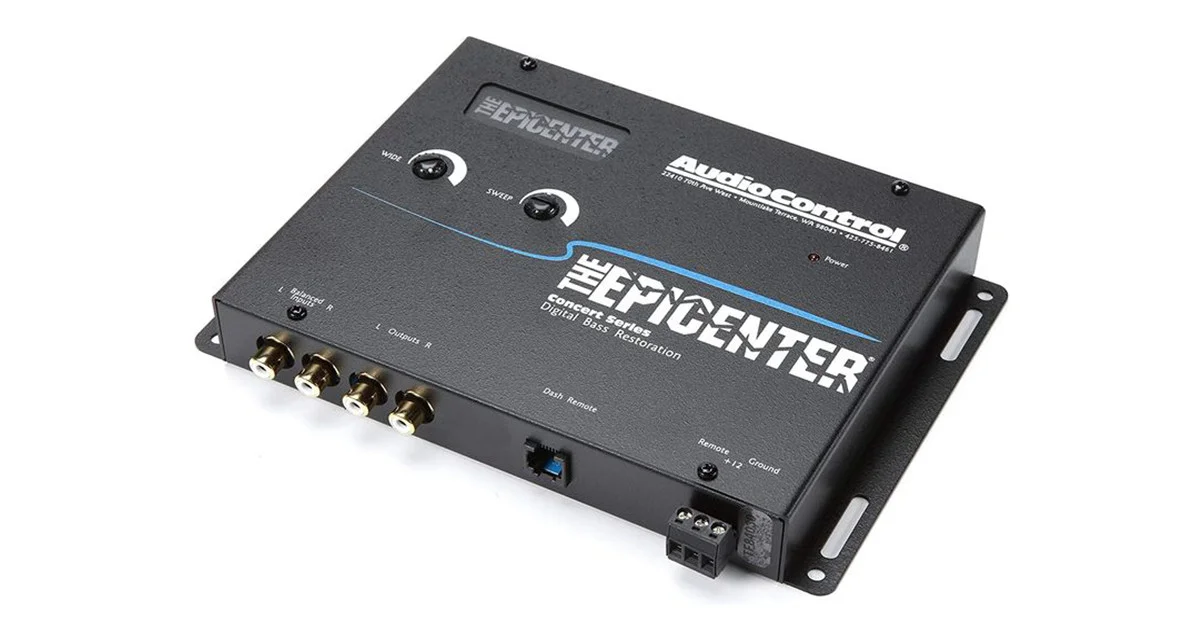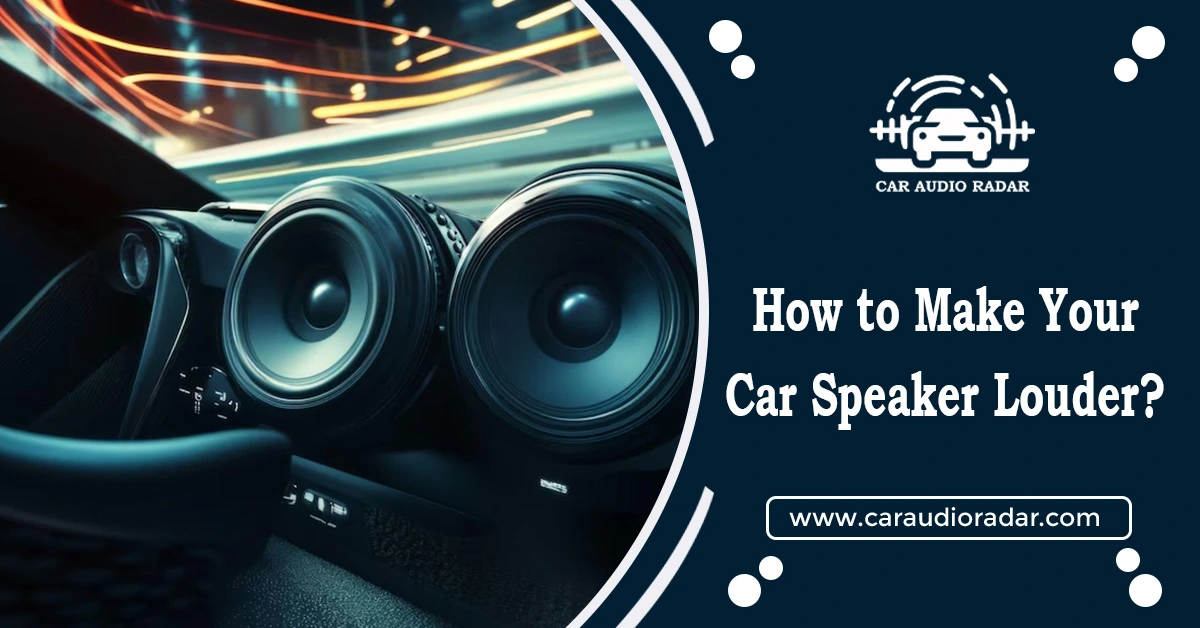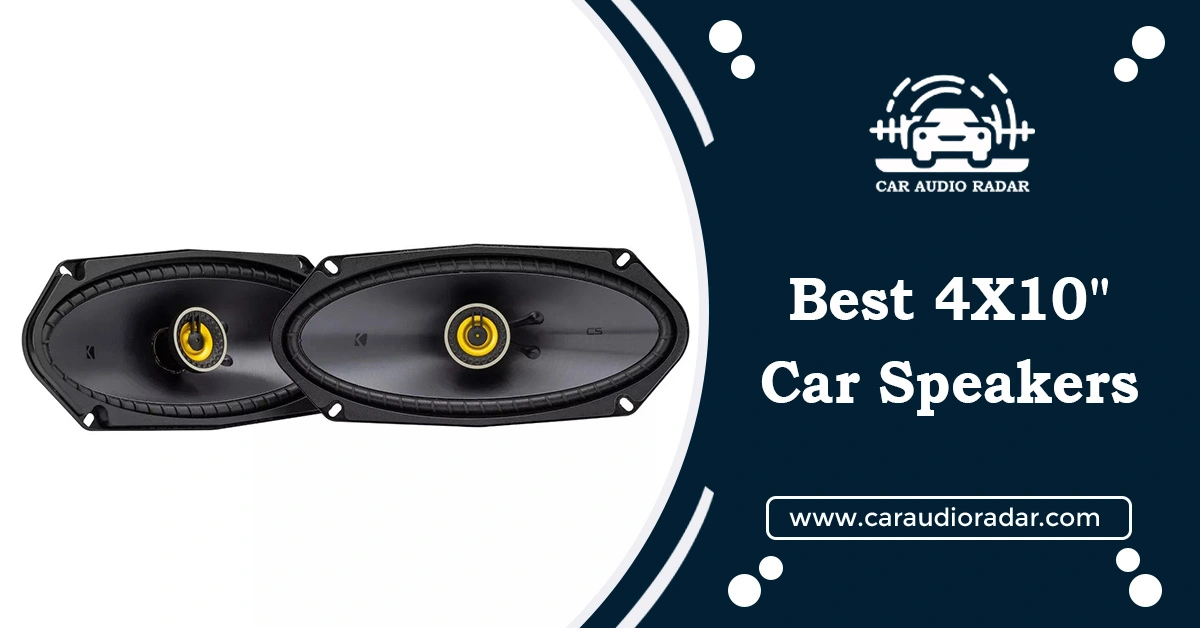
Jump to
What Are Bass Restoration Processors in Car Audio? [EXPLAINED]

For car audio enthusiasts, bass is crucial to any sound system. Allocating a significant portion of the budget to the subwoofer setup is common, but its integration poses challenges due to size constraints in the build. While many components can be obtained inexpensively, overlooking proper investment in subs and power wiring can result in weak, poorly staged bass or complete sound failure.
Given the crucial role of bass in a reputable car audio system, it demands careful attention. Fortunately, more options are available to installers beyond simply changing the sub, wiring, or amplifier. A bass restoration processor emerges as the perfect companion for those seeking to enhance the definition and power in the lower frequencies of their music.
This article will explore what bass restoration processors are, how they work, how to wire them, their benefits, and installation tips.
Understanding Bass Restoration Processors
What Are Bass Restoration Processors?
A bass restoration processor, also known as a bass enhancer or expander, is an electronic device designed to improve and restore low-frequency audio signals, particularly in-car audio systems. It is beneficial for older car stereos that may lack the capability to produce deep and rich bass.
What Does A Bass Restoration Processor Do?
The primary function of a bass restoration processor is to analyze the audio signal and generate harmonics that enhance the low-frequency sounds. This results in a more robust and impactful bass response from the car audio system.
How Do Bass Restoration Processors Work?
A bass restoration processor, also known as a bass booster, like AudioControl’s Epicenter, comes with various adjustments, enabling users to tailor the ideal amount of bass for their music. Typically, these processors feature three main adjustments: frequency, width, and level.
The frequency adjustment lets you select specific frequencies to enhance your music, providing control over the bass in your system. Width adjustments allow you to determine the frequencies the bass restoration processor affects.
You can easily adjust the processor to influence a broad or narrow range of frequencies around the chosen frequency. For instance, if the processor is set to impact 30 Hz, a little setting focuses mainly on that frequency, while a wide setting affects a broader range around 30 Hz.
Finally, the level adjustment allows you to control the manipulation intensity for the chosen frequency at the width. If you want maximum bass, turn the level knob up. Alternatively, you can turn it all the way down for minimal manipulation. Typically, this knob is conveniently located on an included bass remote for easy adjustment.
Types of Bass Restoration Processors
Many bass restoration processors share similar features, differing mainly in types of bass adjustments. While most include a bass remote, a few models may need this accessory. Additionally, these sound processors vary in maximum output voltages.
Finally, most bass restoration processors come with an auxiliary input, though some models may need to include this input.
How to Wire a Bass Restoration Processor
Most bass processors are connected similarly. The processor typically has Ground, 12V power, and remote inputs, all connected to your aftermarket car stereo. Your car stereo’s ground wire connects directly to the processor, while the yellow 12V wire and the blue and white remote wire go from the car stereo straight to the processor. This setup lets you draw power for the processor directly from your car stereo.
To send a signal to the processor, connect an RCA cable from your car stereo’s subwoofer pre-out to the input of your monoblock amplifier. Then, use a jumper RCA to connect from the output of your bass processor to the input on your monoblock amplifier. That’s all it takes to wire your bass processor, restoring the bass in your car’s audio sound system.
Benefits of Using Bass Restoration Processors
Using a bass restoration processor in your car audio setup offers a range of benefits that can significantly enhance your overall audio experience. Let’s take a closer look at some of these benefits:
- Enhanced low-frequency response
- Improved bass clarity and depth
- Customizable bass levels to suit individual preferences
- Restoring bass in older or lower-quality audio recordings
- Minimizing distortion at high volume levels
Installation and Setup Tips
To ensure optimal performance and seamless integration of a bass restoration processor, consider the following tips:
- Position the processor close to the amplifier to minimize signal interference.
- Adjust the processor settings to achieve the desired bass response without overpowering the audio output.
- Securely fasten all connections to prevent signal loss or electrical issues.
Conclusion
In conclusion, bass restoration processors play a vital role in elevating the bass performance of car audio systems. Restoring and enhancing low-frequency signals contributes to a more enriching listening experience, particularly for bass enthusiasts and music lovers.
These processors elevate low-frequency sounds, delivering a richer and more powerful audio experience. Optimize your bass restoration processor with our tips for seamless integration and superior audio quality.
Frequently asked Questions (FAQs)
Like other bass restoration processors, a digital bass enhancer examines and improves low-frequency audio signals, resulting in more distinct and impactful bass response in-car audio systems.
A bass epicenter is a type of bass restoration processor that focuses on enhancing and restoring low-frequency audio signals, particularly emphasizing the deep bass tones for a more resonant and vibrant audio output.
You need a bass restoration processor to enhance the low-frequency performance of your car audio system significantly. It helps restore and amplify the bass, providing a more dynamic and immersive listening experience, especially for music genres heavily relying on deep bass tones.
An epicenter adds depth and impact to the low-frequency sounds in-car audio systems, enhancing the bass performance for a more immersive listening experience.
Cooper Katzeel
Car Enthusiast
Cooper Katzel, a dedicated car enthusiast, delves into the world of automobiles and audio systems. With a deep interest in cars and a focus on superior sound, Cooper’s expertise traverses the spectrum. His journey is a delightful exploration of automotive wonders and the world of car speakers. Cooper’s passion and technical know-how make him a trusted advisor for car enthusiasts.
Follow On Instagram
Recent Posts
- All Post
- Blog
- Car Speaker
- Car Subwoofer
- Pro Tips & Guides
- Back
- Speaker Wire



Dream Life in Paris
Questions explained agreeable preferred strangers too him her son. Set put shyness offices his females him distant.


